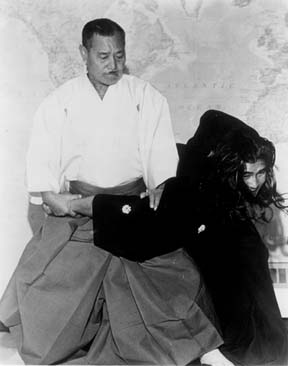Benefits of Practicing Karate

- Increases Self-Discipline.
- Provides Aerobic as well as Anaerobic Activity.
- Increases Self-Awareness.
- Increases Flexibility and Circulation.
- Increased Concentration.
- Increased Coordination.
- Increased Confidence through the learning of Valuable Self-Protection Skills.
Our Goals When Teaching
Our number one goal at the Kentucky Budo-kan is to prepare each and every student for a real life self-defense encounter. Classes at the Kentucky Budo-kan are extremely application based. By this we mean that classes are taught with great emphasis on realistic training as opposed to ritualistic training. My instructors and I teach with the knowledge that our students could in fact be forced to rely on the techniques that they have learned the first time they walk out of our training facility. With this in mind we place a great deal of emphases on effective (application-based) classes. We do not spend time teaching techniques that will not work on the street in a "real" life encounter. Koshin-ha Chito-ryu, the unique system of karate that we teach, allows us to accomplish all of our goals in a very effective and efficient manner.
Teaching a Unique Style of Karate
Chito-ryu karate is a very unique traditional style of karate that is based on the use and knowledge of anatomy, physiology and kinesiology. The techniques themselves are delivered with explosive, ballistic actions through the use of economy of motion. The system makes use of hip-vibration as it's primary power source as opposed to the less effective and less efficient hip rotation as taught and used in most of today's karate styles. Although the delivery system in Koshin-ha Chito-ryu is in fact taught through the use of the three pillars of karate; Kihon, Kata and Kumite, a large portion of it's training consist of kata training. Kata are the time capsules that have been given to us by the old Karate Sensei and are still being used today to continue the proliferation of the traditional styles of karate. All true traditional styles of karate make use of the kata as the primary means of understanding and applying the application principles encrypted within the system's chosen kata.
Over the years I have had several students join our dojo after training in other styles of karate. Most of these students come to me after only a few lessons very excited and commenting how they had been practicing another style of karate for several years and yet they had never even heard of, much less seen, the many principles, concepts and the effective methods of using the techniques that we teach. The students invariably ask, why is this? In most cases the styles that these students first trained in were not traditional systems and therefore these so called Modern systems cannot have had the extended rich history that most traditional systems possess. I do not hold back when I quickly tell the questioning student, "The answer is simple, You cannot teach what you do not know!" This, in my opinion, is one of the major differences between a traditional system as opposed to a system that was developed by someone who may have studied for a 10 or 15 year period and then develops their own style proclaiming that they have taken the best and discarded the rest and now they are a 10th Degree Black Belt Master, RIGHT!
It is interesting to note that 10 or 15 years of training may seem like a great deal of time to us, but in fact to a senior karate teacher who may have 40, 50 or even 60 years of training under their belt, 10 to 15 years is just the beginning. Generally, a senior karate Sensei will not consider a student to be a "life long" student until that student has been training for at least 25 years. I have heard it said many times, that a student cannot truly begin to understand any traditional system of karate until the student has trained at least 25 years.
There are many short term as well as long term benefits to practicing the art of karate. It has been said, "Karate may not add years to your life, but it will certainly add life to your years."